That’s when I learned how simple things like soy sauce and sugar could change a dish. Mixing these makes a true sweet soy sauce. It goes into dumplings, noodles, small appetizers, and more.
This sweet soy sauce is not like your usual soy sauce. It’s thicker and has a rich taste. The quick online recipes—just soy sauce and sugar—do not come close. When you try this real kind, you’ll see why I never look back. It’s a top flavor I crave. I learned it right there in Sichuan, from the real cooks.
I’ve been making Sichuan dumplings and wontons in red oil for years now. I picked up the trick on that trip. It’s something I always keep ready in my kitchen. When I make water noodles on a busy night or try new Sichuan recipes, this sauce changes it all. It still stuns me how the mix of sweet and salty in soy sauce can turn a plain dish into something great.
With a little time and trust in the steps, you can make this at home. I promise it’s worth it. The taste gets so close to what I had in Beijing and back in Sichuan, it almost feels like I’m there again. It’s one of those things that makes all the care in cooking pay off big.
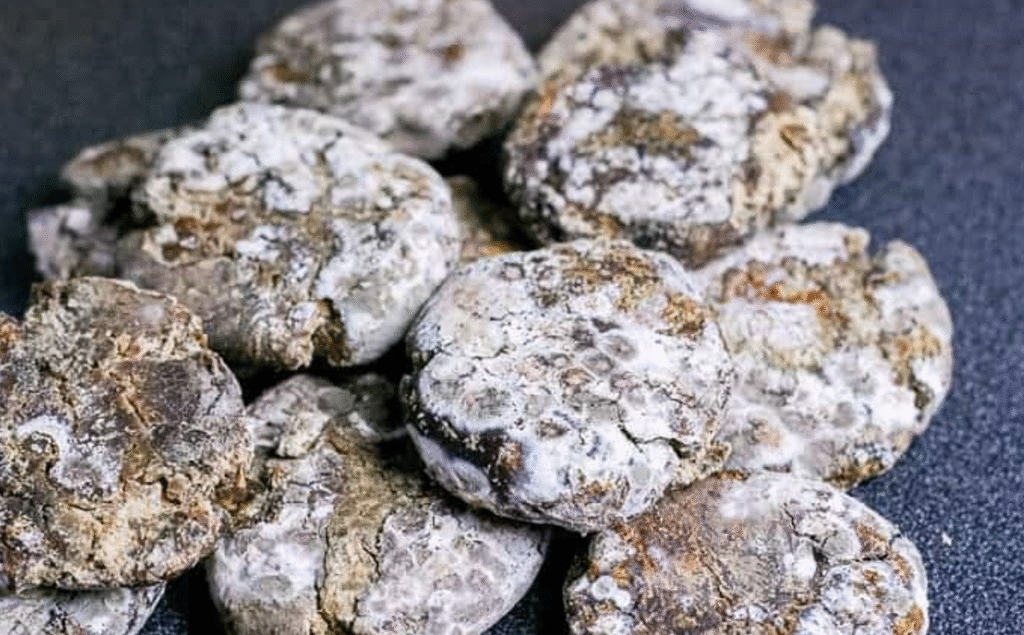
What is Soy Sauce?
Soy sauce is a popular liquid that gives a savory taste to many dishes. It’s a must in many foods like ( Spicy Tuna Crispy Rice, Sushi hand rolls, Single serve sushi bake, Salmon Sushi Bake, and Vietnamese Fried Rice) . This sauce comes from fermented soybeans, wheat, and mold cultures. It’s then brewed with yeast and other natural things. The result is a salty, earthy sauce with deep umami flavor.
There are many kinds of soy sauce. It all depends on the recipe and where it comes from. You might know names like Kikkoman, Marukin, and Lachoy. Some types are darker, like tamari, which is rich and bold. Others are lighter, like usukuchi, which is more salty and thin.
Japanese soy sauces, such as koikuchi, often have wheat. They taste a bit sweet compared to many Chinese soy sauces. You’ll also see special kinds. One is shiro, which is white and very light. Another is saishikomi, which they brew two times. This gives it a strong taste.
No matter if it’s briny, thick, or clear, each kind of soy sauce brings its own flavor. It makes every dish special in its own way.
What is dark soy sauce?
Dark soy sauce is thicker and darker than regular soy sauce. It is often used in cooking for its rich taste and the deep brown color it gives to food. This type has a longer fermentation process, which builds more depth. It also makes it less salty than light or regular soy sauce.
The dark black color of dark soy sauce comes from the way the soybeans are fermented. This gives it a darker look and a more layered taste.
Many store brands might not say “dark” on the label. But you can tell by its thicker feel and bold taste. It adds a strong, rich kick to any dish.
What is light soy sauce?
Light soy sauce (called usukuchi) is a saltier type of soy sauce. It has a lighter color and a soft sweetness. This comes from the fermented rice used when it’s made.
Unlike koikuchi shoyu, which is darker, it has a shorter maturity time. That means it does not change how your dishes look. It lifts the taste of other ingredients without taking over.
That’s why it’s great for recipes where you want a subtle, even flavor. I often use it when I cook dishes that need a light touch but still need that deep umami.
How to Make Authentic Soy Sauce at Home
Now follow my steps, then you make Authentic Soy Sauce at Home:
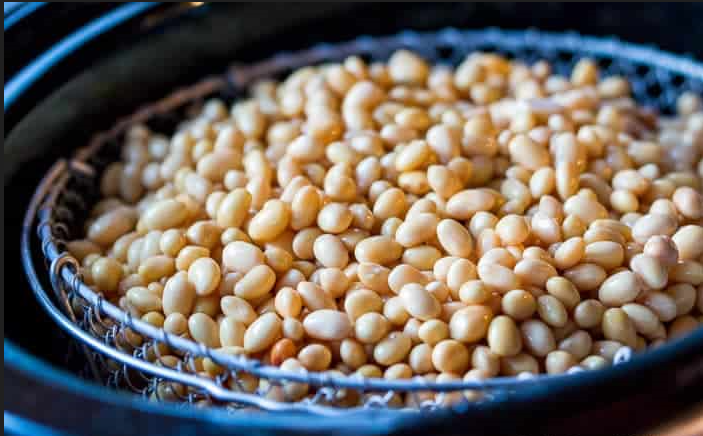
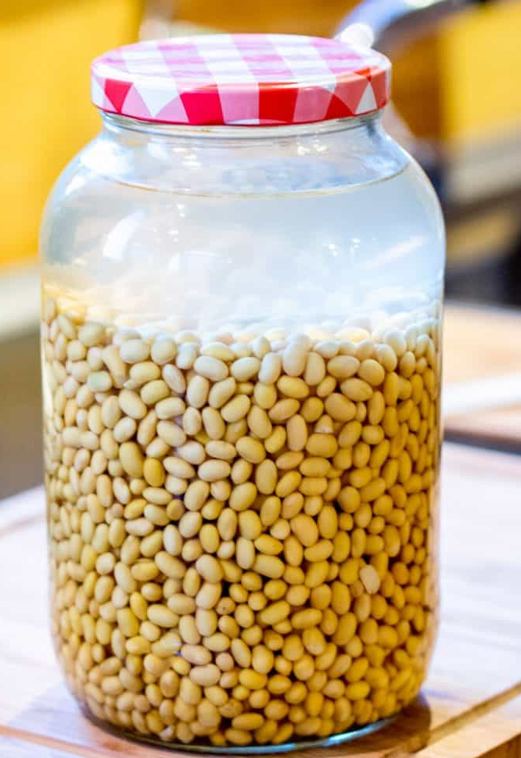

Step1 : Prepare the soybeans
I always start by rinsing my soybeans in a glass jar with cool filtered water.
They soak for 12-16 hours, doubling in size.
When they’re plump,
I either pop them into a pressure cooker or do a slow boil for about 6 hours.
A simple press with my fingers tells me they’re done—soft enough to crush.
Seeing that transformation never gets old; it’s the foundation of building deep umami.
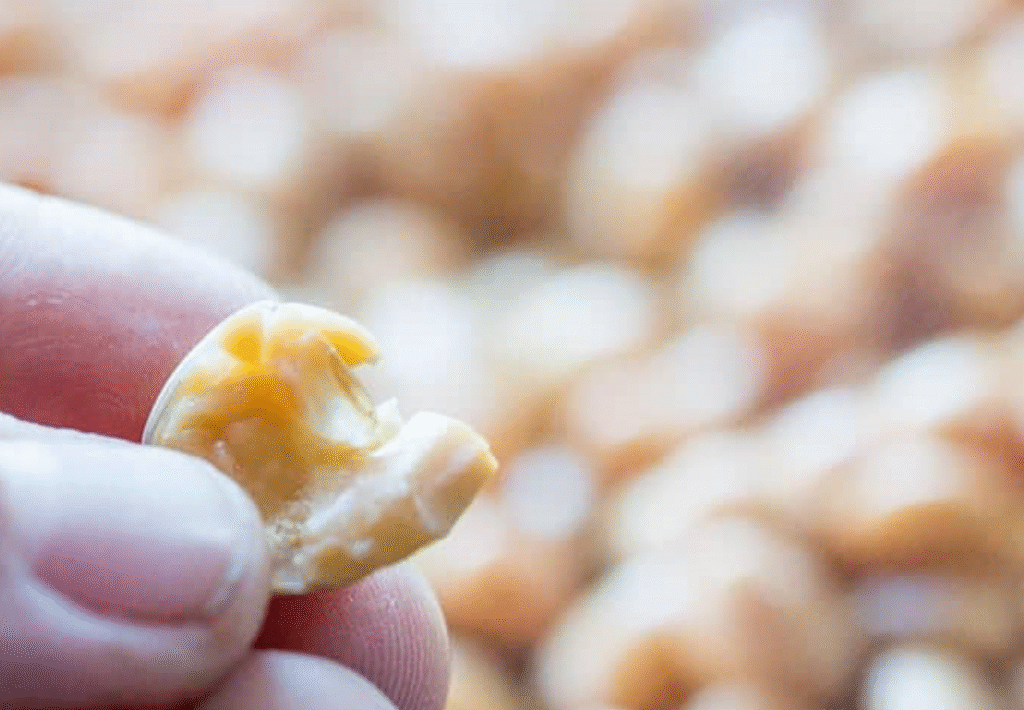
Step2 : Prepare the wheat
Next, I work on the wheat berries.
I like to broil them on an oven tray until golden brown, watching carefully to avoid burning.
Then I run them through my grain mill until coarsely ground—not powdery.
This gives a perfect texture that the koji will love.

Step3 : Preparing the koji
Once the wheat is ready and my soybeans have cooled, I mix them in a large mixing bowl.
Sprinkling in the koji starter, I stir until everything’s nicely inoculated.
Then I spread it on glass trays, create gentle furrows, and keep it inside my oven with the oven light on to maintain around 85ºF.
I use a thermometer to keep an eye on it, stirring often to break clumps and watch for fuzzy mold or yellow spores.
This careful process really shows how essential small details are for good flavor development.

Step4 : After 2- 2.5 days
In about 2.5 days, I usually see a healthy fuzzy soft white mold.
Sometimes, tiny yellow-green or yellow patches appear, which are just the koji spores forming.
A light sniff gives off that sweet, earthy aroma that tells me it’s on track.
Any dark green mold or sticky spots, though, and I’d toss it to avoid risking the batch.
Checking every few hours helps keep the mold heat in control, especially since the koji temperature should stay between 80-95ºF.
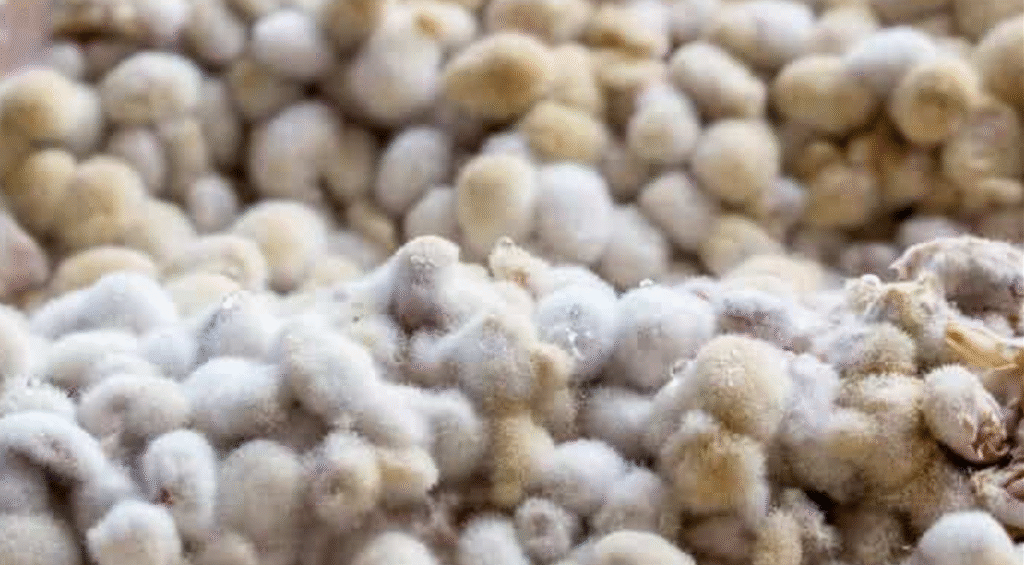
Step5 : Prepare the brine solution
When the koji is ready, I make my brine solution by dissolving 3.5 cups of salt in 2 gallons water inside a big glass container.
I stir until it’s fully clear—no grains left.
This salty bath is crucial for building that layered salty-sweet profile that reminds me so much of Vietnamese street eats.
Step6 : Prepare the moromi
I mix my finished shoyu koji into the brine, pour it into jars, and label them with the date.
These stay covered at around 77ºF for 6-12 months, and I stir them once a week. Slowly, the moromi darkens to a rust-brown, growing richer.
This is when the magic of slow fermenting, yeast, and bacteria really does its work, breaking down proteins into savory amino acids.
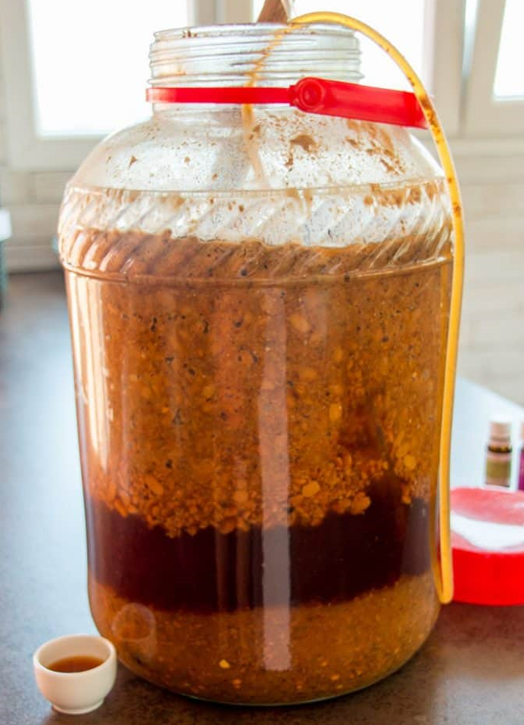
Step7 : Straining the moromi
When it’s time, I strain the moromi using a pressing cloth or twist it in a pressing sack.
The liquid flows out, leaving behind the solids. This first pour is often lighter,
So I filter it again,
sometimes pressing through a stainless bowl or pouring through glass jars to catch any fine soybean residue.
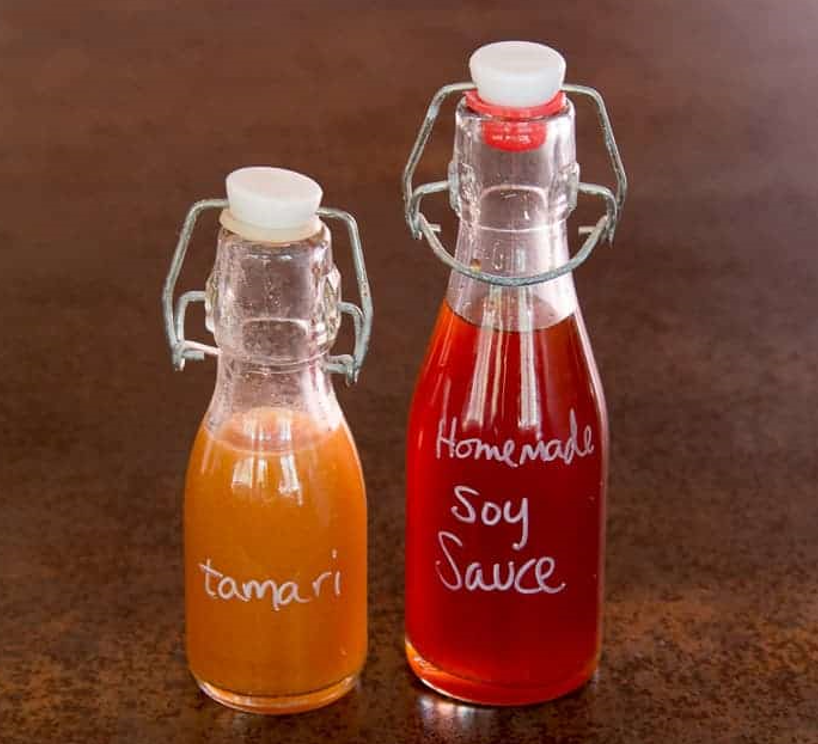
Step8 :Obtaining a dark-colored soy sauce
To deepen the soy sauce taste, I place bottles under the hot sun on my sunny terrace for another 3 months.
This extra step gives me that dark colored shoyu with intense umami deep, rust taste, and a gorgeous sun matured glow.
Each bottle holds the story of months of careful fermentation time, daily checks, and little adjustments—something
I always love sharing when friends ask why homemade soy sauce is so special.
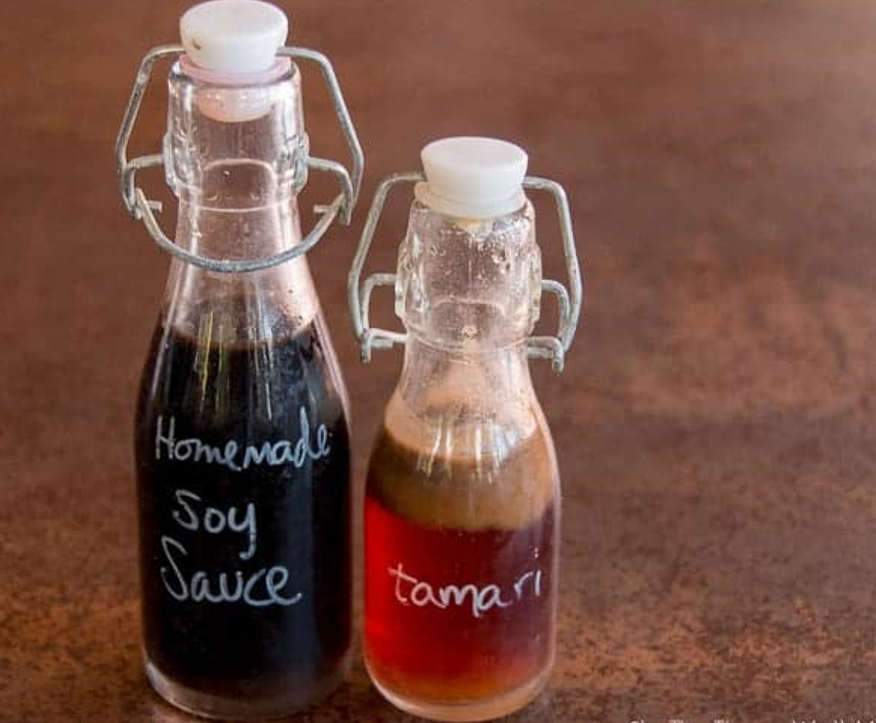
Storage
Once you’ve finished making the sauce, remember to store it in an airtight jar in the fridge. It’ll last for a long time—last forever, in fact—so you can always have some on hand for your next dish!
Authentic Soy Sauce at Home (So Easy & Rich in Umami!)
Description
Soy sauce is more than a salty sauce. It’s a centuries-old food that brings deep umami to dishes all over the world. Made from soybeans, wheat, water, and salt, it goes through natural fermentation for six months to two years. This gives it that dark color, rich taste, and slight sweet note.
In Japan, it’s called “shoyu.” In China, it’s “jiangyou” (酱油). Both are key in marinades, stir-fries, dipping sauces, and noodles, but they taste a bit different. Japanese soy sauce is often a bit sweeter. Chinese soy sauce is stronger and saltier.
Soy sauce is also low in calories — just 10 per tablespoon. But it’s high in sodium, almost 900 mg. That means it adds lots of taste, so you only need a little. It also gives you tiny amounts of manganese, iron, and phosphorus.
As a trusted culinary expert, I keep many types in my kitchen. I use light soy sauce to season most foods. I grab dark soy sauce to add color to stews. I keep tamari on hand for friends who can’t have gluten. Even at home, a splash of good soy sauce makes simple dishes like rice bowls or cold tofu pop with flavor.
I buy soy sauce, I look for bottles that say naturally fermented. They have no fake caramel color or extra chemicals. This makes the taste real and helps your gut with by-products from the fermentation.
So whether you’re cooking a fast stir-fry, slow pork belly, or a cool sauce for dipping, soy sauce is a must. It’s loved for its umami, how many ways you can use it, and its deep roots in food culture.
Ingredients
For the Brine
Nutrition Facts
Servings 256
Serving Size 1Tablespoon
- Amount Per Serving
- Calories 36kcal
- % Daily Value *
- Sodium 1249mg53%
- Potassium 84mg3%
- Protein 2g4%
- Vitamin C 0.2 mg
- Calcium 16 mg
- Iron 0.9 mg
* Percent Daily Values are based on a 2,000 calorie diet. Your daily value may be higher or lower depending on your calorie needs.
Note
- Use clean jars and tools. This helps keep bad bacteria away so your soy sauce ferments safely.
- Watch the temperature. Keep your mixture warm, around 77ºF to 85ºF (25ºC to 32ºC). Too hot or too cold can slow or ruin the process.
- Stir the moromi often. This gives air to the friendly microbes and helps flavors build up. Stir every day for the first week, then once a week.
- Be patient. Good soy sauce takes time—usually 6-12 months. The longer you wait, the richer and deeper the taste.
- Strain well. Use a cloth or fine strainer to get a clear liquid. Press or twist to squeeze out all the good stuff.
- Store it right. Keep your finished soy sauce in clean glass bottles with tight lids. It can last a long time in a cool spot.
- Try sun finishing. Leaving your bottles in a sunny place for a few weeks can give a darker color and stronger flavor.
- Taste along the way. Don’t be afraid to sample it now and then to see how the flavor grows.

